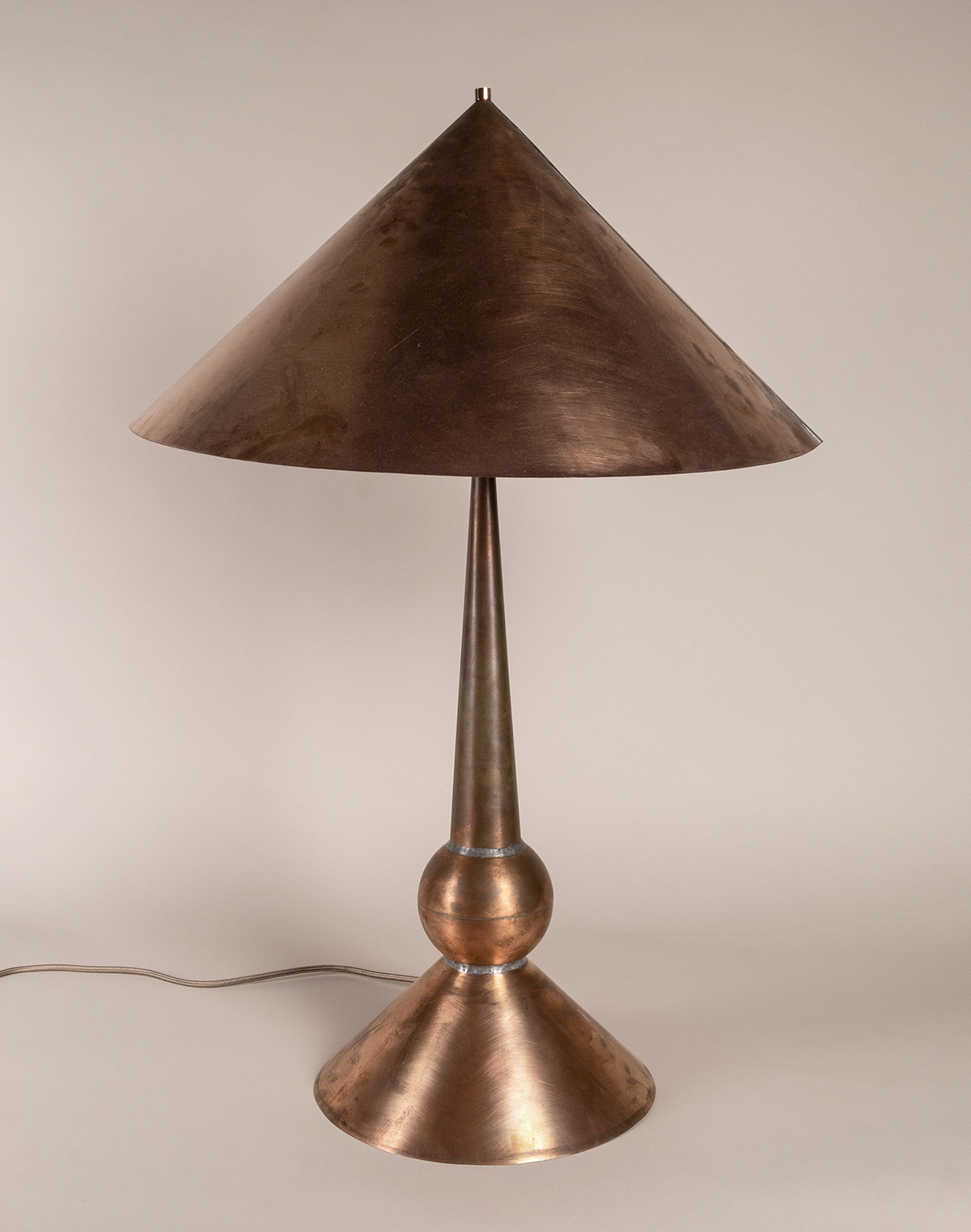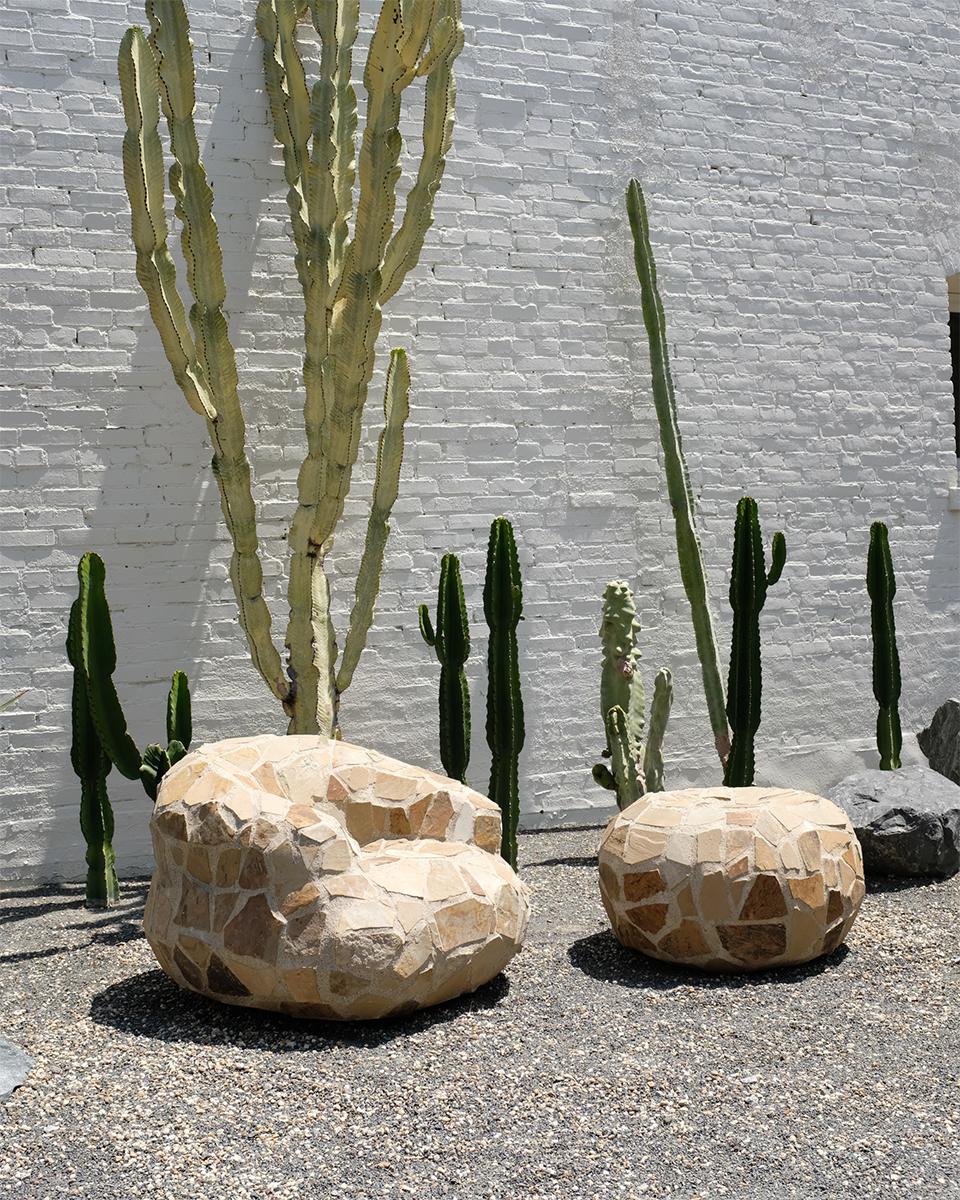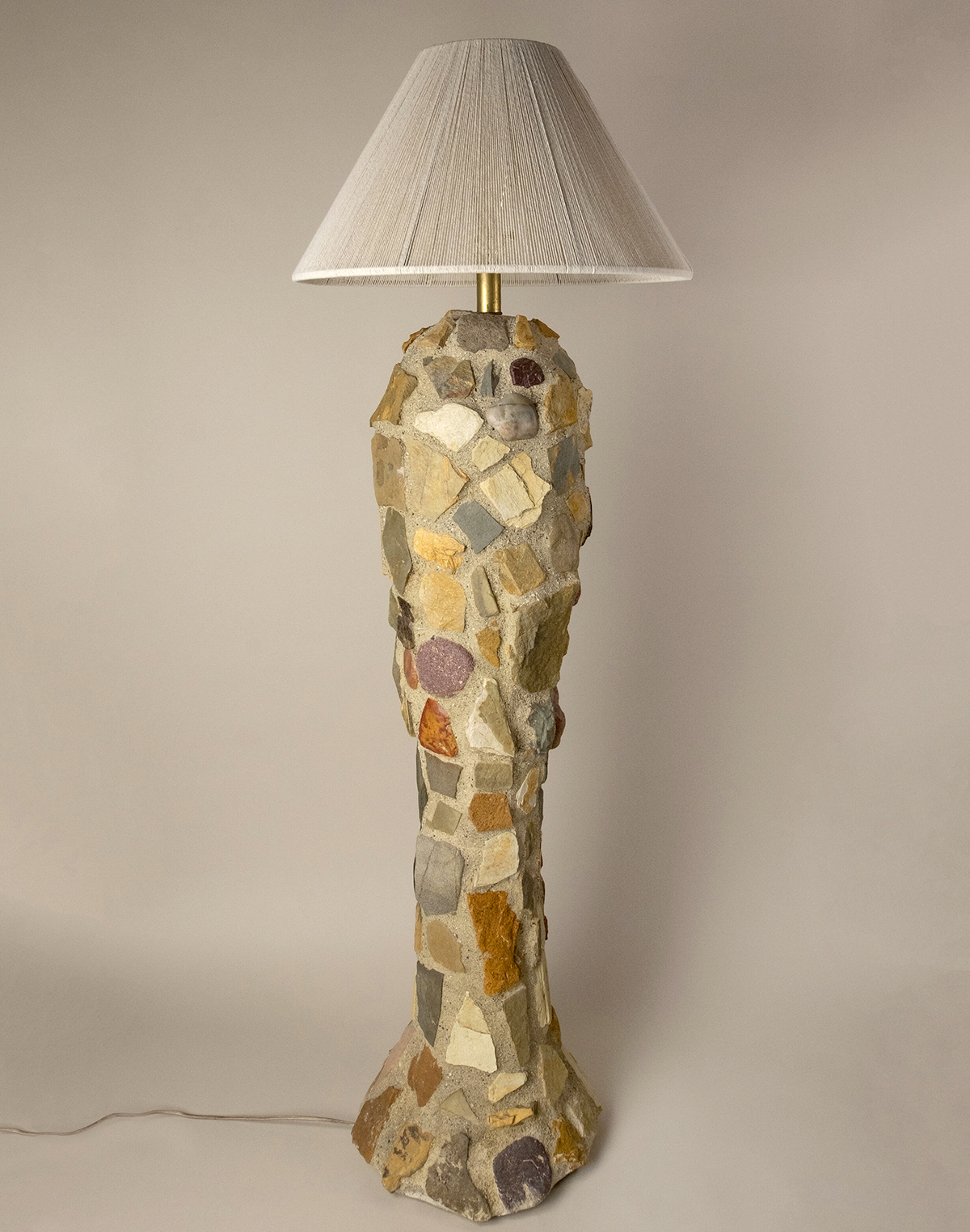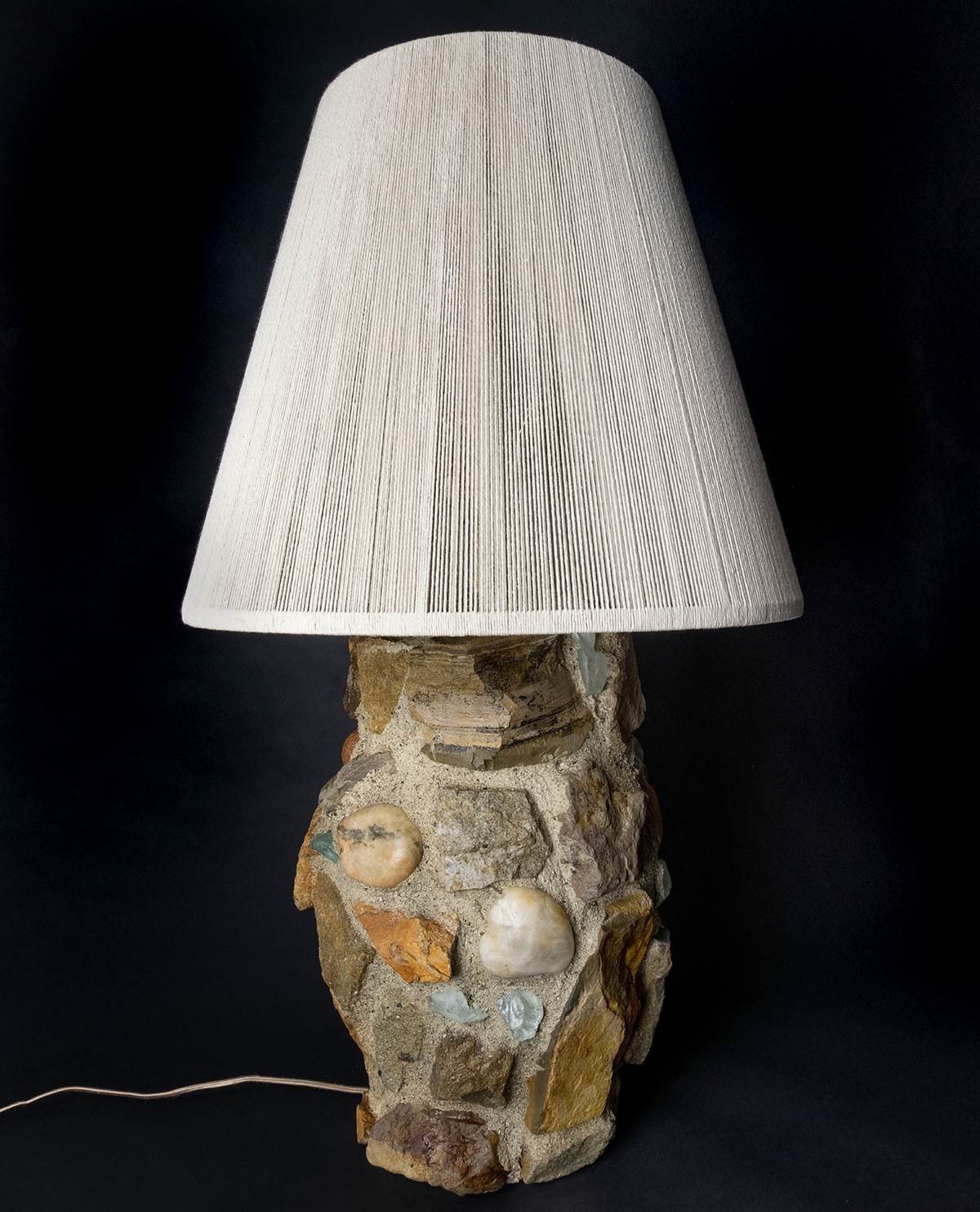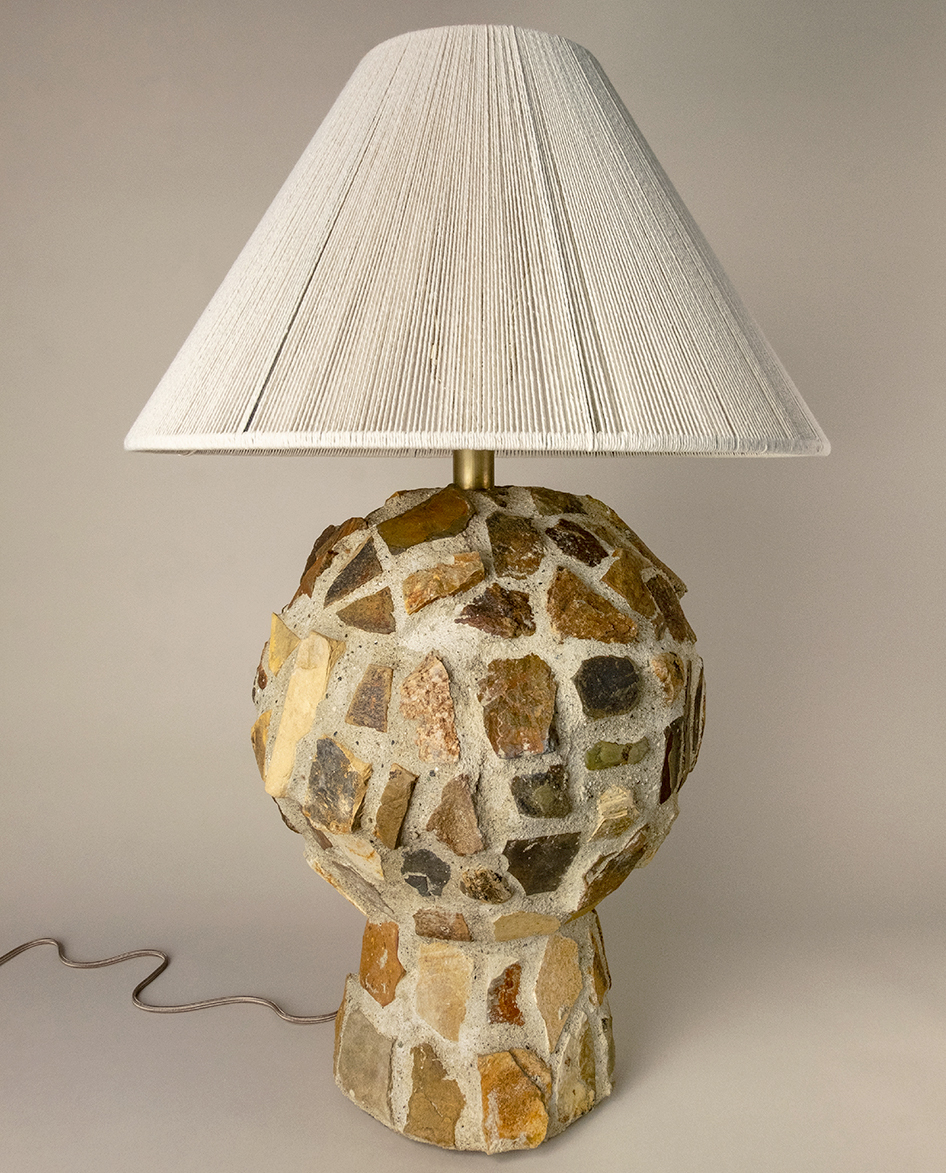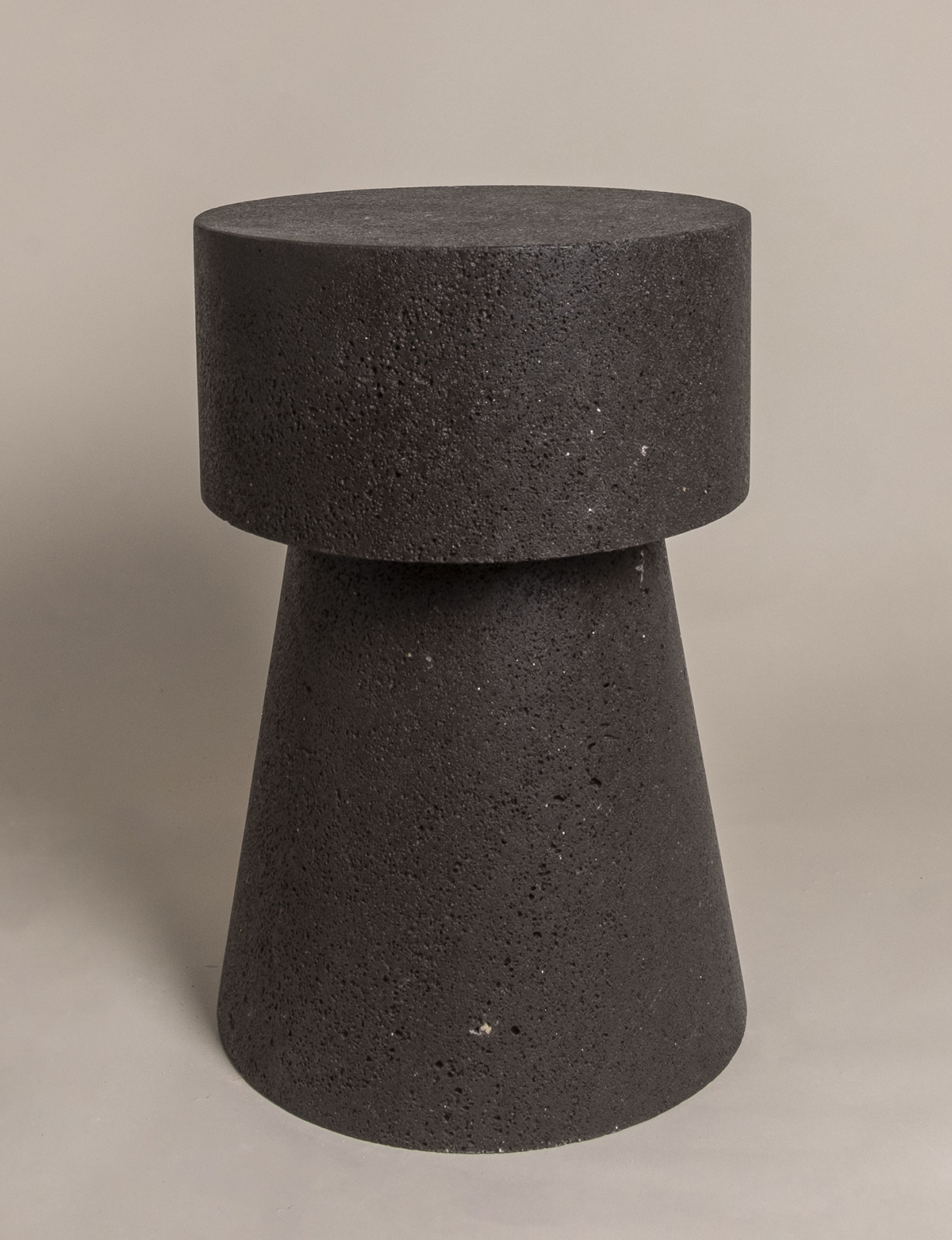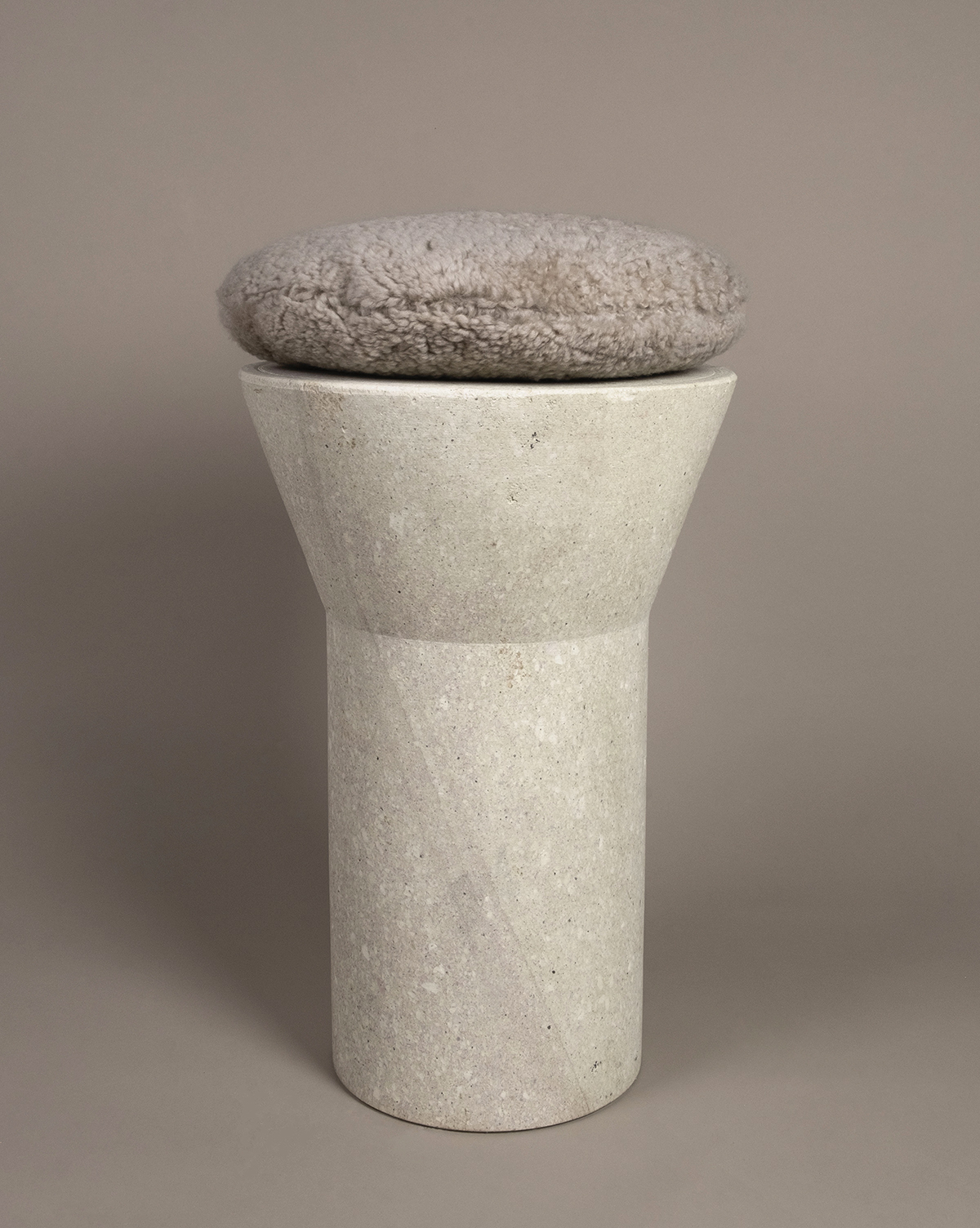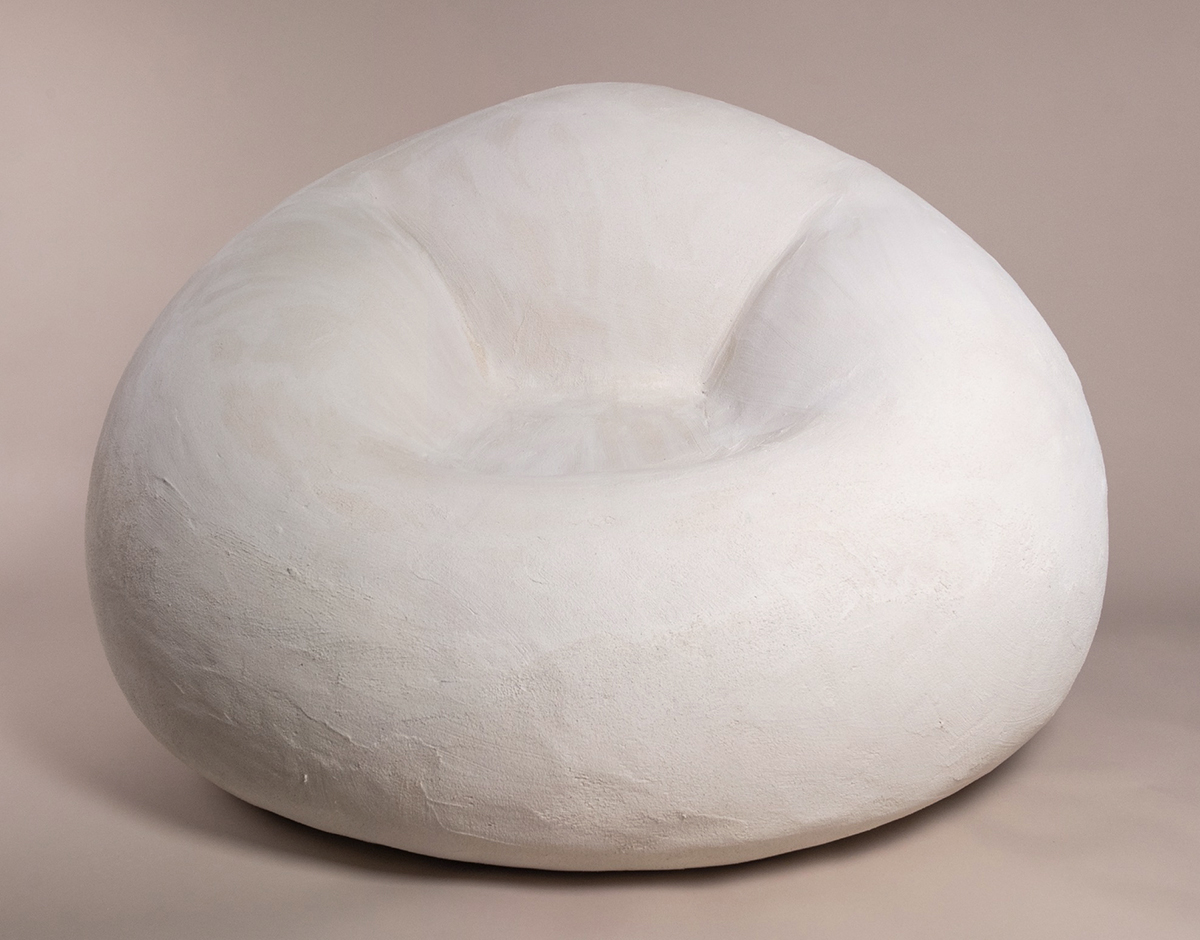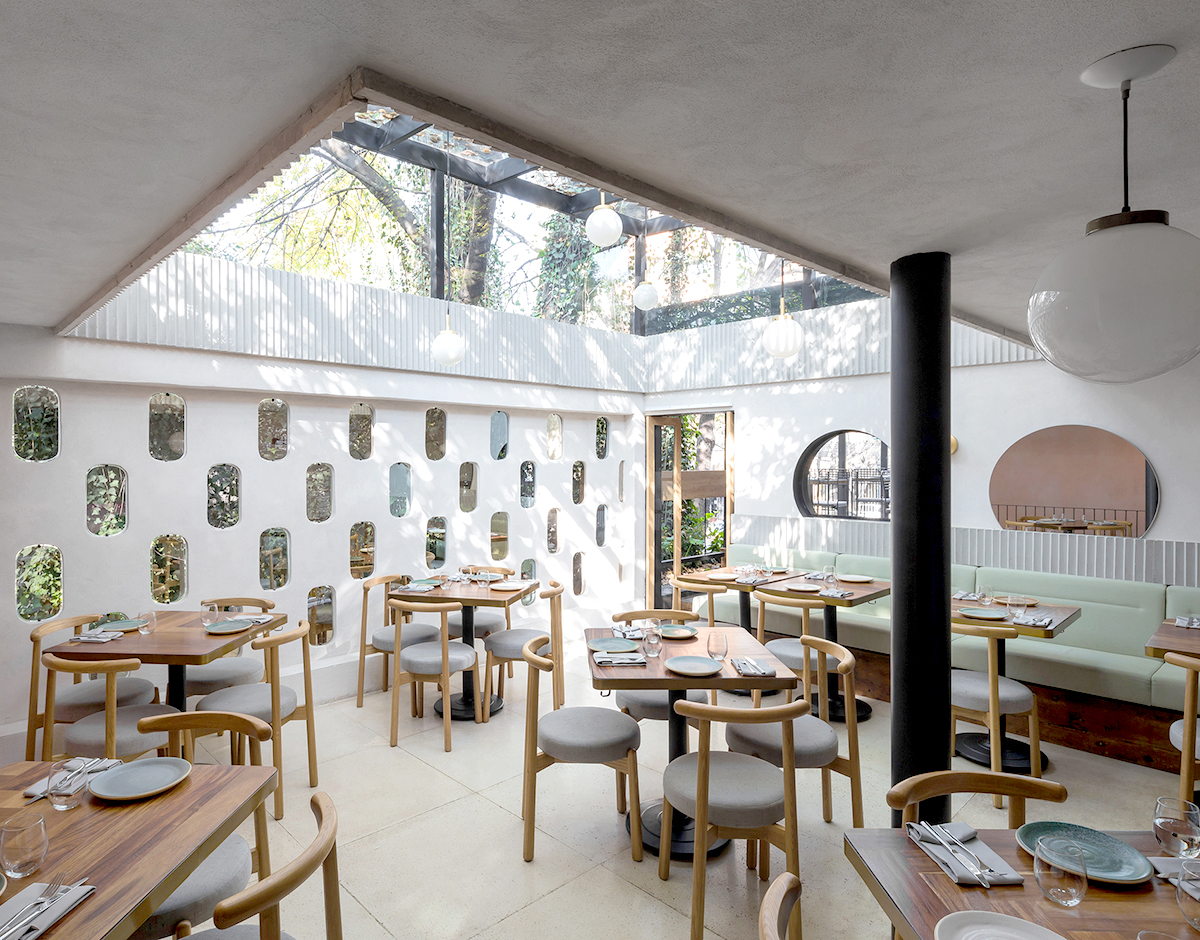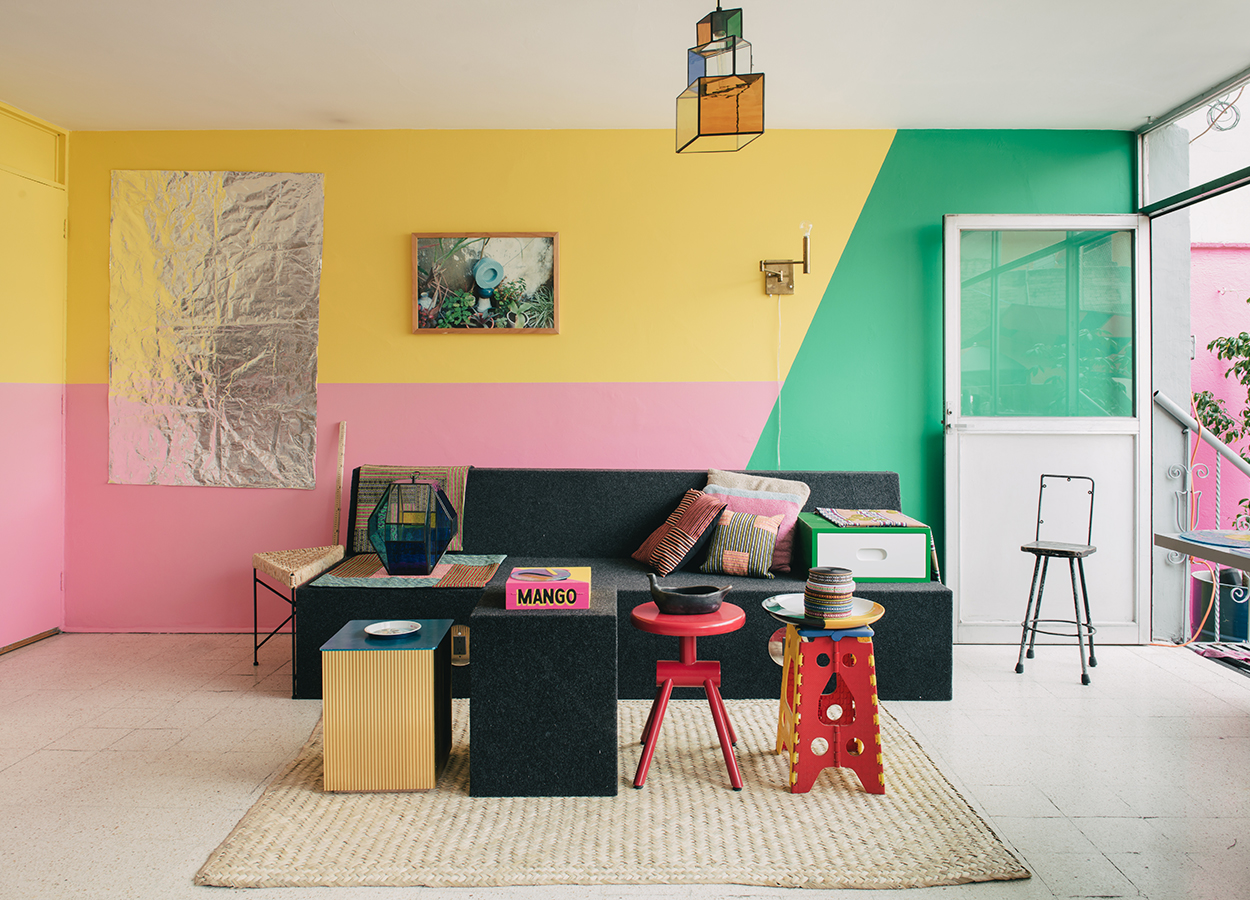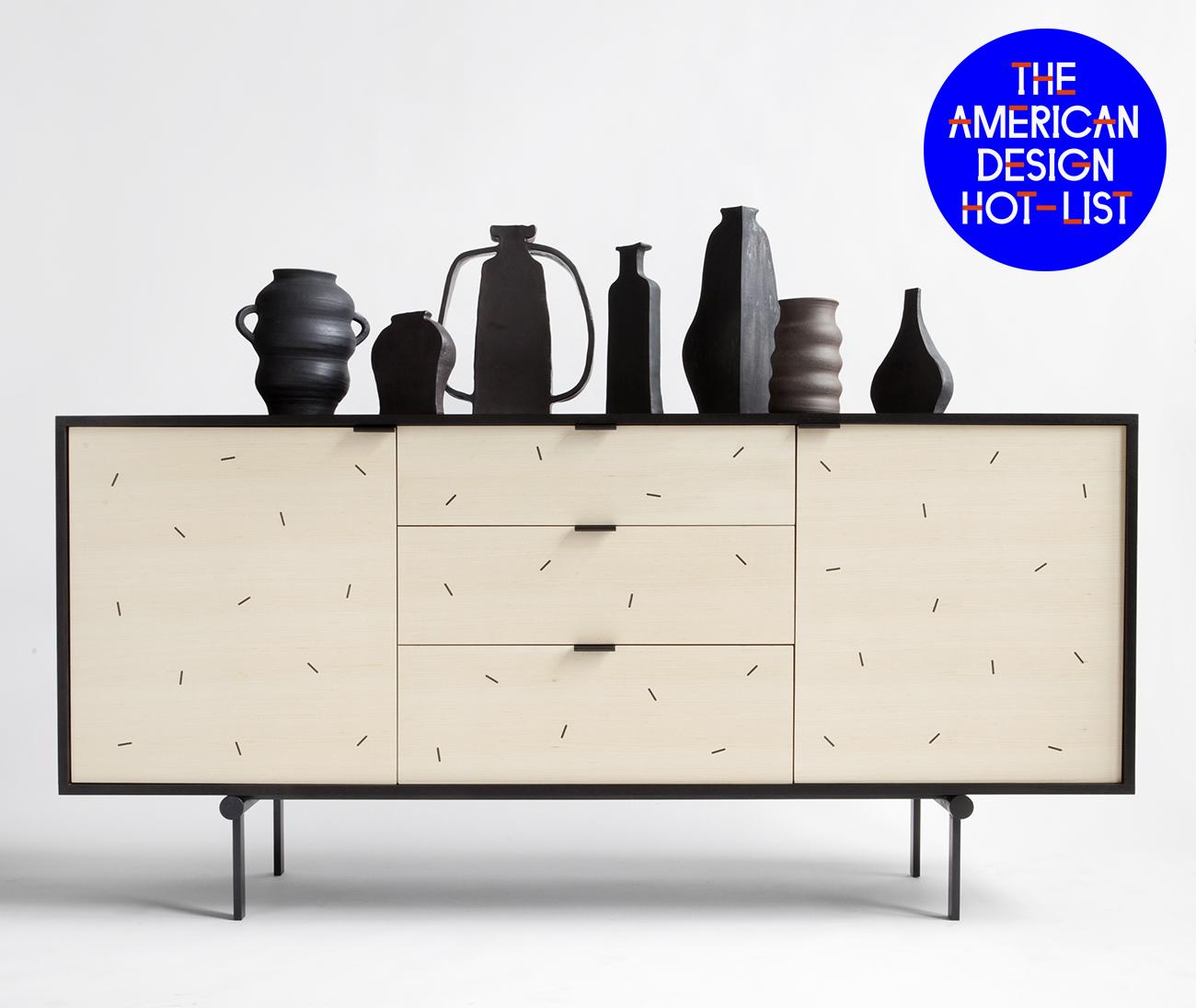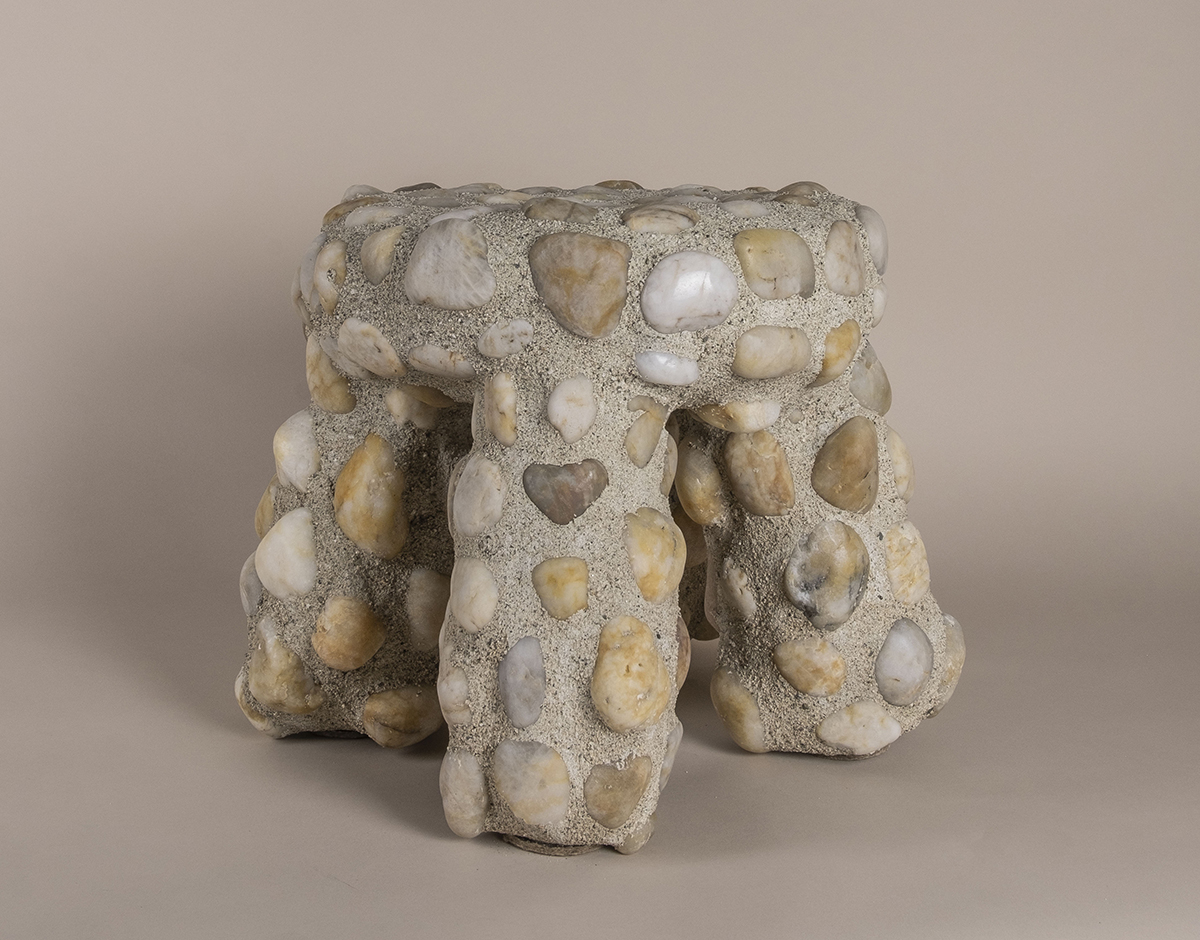
American Design Hot List 2019
Lland
Los Angeles, lland-studio.com
We never thought we’d use the words “rustic chic,” but we can’t think of a better way to describe the work of Los Angeles designer Rachel Shillander, who combines natural materials in their roughest, rawest states with sophisticated, elevated forms. Her Masonry series in particular really sold us — for awhile we were calling it “terrazzo 2.0.”
What is American design to you, and what excites you about it?
To me you can’t talk about American design without addressing American fabrication, and for me American fabrication is about options. For what you can’t figure out how to make yourself, there’s a fabricator for it. If you need to lay some stone, there are masons. If you need to bend some wire, there are wire-benders. You can also chose from nearly any scale and price point — dude-in-a-garage machinists to large-scale commercial outfits. You only have to know how to communicate with them: a hand-gesture, sketch, or full set of shop drawings. It’s also about pushing the limits of the options that are available. There are loads of new digital fabrication methods, too, and they’ve been around long enough now that they’re pretty affordable. Owning a CNC machine or having access to a robotic arm isn’t out of the question anymore. America is vast and there really are so many resources available to us.
We also aren’t limited to fabricators in the US; Mexico has been a great resource for me. There are so many skilled stone carvers there, and it’s so close. I’ve found that in the US, a trade like stone carving is treated like a fine art, and in Mexico it is treated more like a trade craft. This has nothing to do with the labor market’s skills, but with price, availability, and attitude. The stone I use for my carved work is also native to Mexico, so it wouldn’t make sense to have it fabricated here. The tradition of carving that stone is there, so why would I ignore the place-specific skill associated with the material? It really is all about the availability of material and labor resources, where to find them, and how to use them.
What are your plans and highlights for the upcoming year?
The studio is moving at the beginning of this year and will be getting a small crane hoist. So far, I’ve figured out ways to work around making heavy objects, like making things on a dolly or a padded surface. It’s worked out alright, but I don’t want to limit myself based on size and weight. It’s time for the correct equipment. The first thing I’ll be working on in the new studio with the new crane is a Shell Chair clad in stone. I think it will weigh about a quarter of a ton? I’m also starting a series of Nakashima/Esherick/Blunk-esque sculptural wood pieces clad in building shingles, and continuing the Copper Finial series to include more than just lamps.
I also plan on getting my architectural license. Though my studio’s primary focus has been on objects, I only started making them as an extension of my architectural ideas, but smaller. Like maquettes. I have no plans to ever quit making objects, but I do still plan on practicing architecture. I only have two more exams and I plan to finish them by the end of 2020. This past year I took a job as an in-house architect at a construction company specializing in residential architecture. My work hasn’t gotten to a place where it can support itself, so having the stability of a salary allows me to experiment, and even though I have less time in the studio, I find that I work more efficiently with the time I do have. I really love and appreciate my job, and plan to keep it. Did you know Marcel Duchamp was a librarian while he made “The Bride Stripped Bare by her Bachelors?” I remind myself of that on my morning commute.
What inspires or informs your work in general?
My personal understanding of ephemerality, phenomenology, and tectonics, and my constant struggle to design with what I consider to be ethics and integrity.
Currently I’m very interested in materials and place, and the relationship between the two. For example, the Copper Finial series. During the install of a show earlier this year, a staff member asked if they should wipe down one of the Copper Finial Lamps on display. I’m sure the horrified look on my face was a dead give away, but the answer is always no. Not only do they have all the marks of fabrication, which I love, but they will eventually acquire all the marks of wear: fingerprints, smudges, water marks, sun exposure, etc. Copper patinas from light and shiny, to a dark brown, and then eventually to a green-blue, which can take decades to achieve naturally. If someone lives close to the ocean it may take less time than if they live in the desert, and even where the lamp sits in your home will affect it. The lamps really do become place- and time-specific. Hopefully people keep the lamps around long enough to enjoy the show.
Overall, it’s the actual making of the ideas I’m interested in. Of course I look at objects and architecture, but mostly I look at materials and process. I literally go to the stone yard or watch masons on a job site. On my own job site, I’m constantly in awe of the tradesmen and craftsmen. I learn everything I know just spying on them. Whereas I work through trial and error, it’s literally their job to produce a desired outcome every time. That’s craft and learned skill that I don’t have yet, and it is inspiring to watch them work.
SHOP WORK BY LLAND IN OUR 1STDIBS STOREFRONT!
